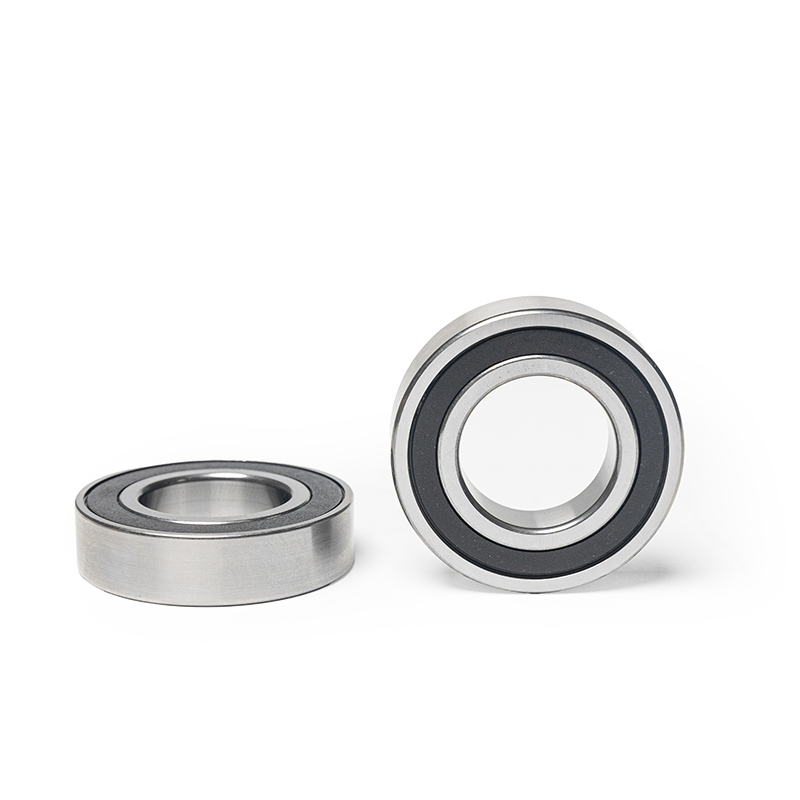Angular contact ball bearings stand as a testament to the ingenuity of mechanical engineering, serving as the unsung heroes in a vast array of industrial and technological applications.
These bearings are engineered to handle both radial and axial loads simultaneously, a unique ability that makes them indispensable in machinery demanding high precision, reliability, and efficiency.
The defining feature of angular contact ball bearings is the contact angle, which is the angle between the line connecting the points of contact of the ball and the raceways and a line perpendicular to the bearing axis. This angle is not merely a geometric parameter; it is the key determinant of the bearing’s load – carrying capacity and operational characteristics. A larger contact angle significantly enhances the bearing’s ability to withstand axial loads, while a smaller contact angle is more suitable for applications with a predominant radial load. For instance, in high – precision and high – speed applications such as those in aerospace and precision machining, bearings often feature a 15 – degree contact angle. Under axial loading, this angle may increase, dynamically adjusting to the applied forces and ensuring optimal performance.
Structurally, an angular contact ball bearing is a carefully crafted assembly of components. It consists of an inner ring, an outer ring, balls, and a cage. The inner ring is designed to fit snugly onto the shaft, while the outer ring is housed within the machine’s housing. The balls, which are the load – carrying elements, are positioned between the inner and outer rings. They roll along precisely engineered raceways, transferring loads from the shaft to the housing through rolling motion. This rolling action significantly reduces friction compared to sliding, leading to lower energy consumption, less wear, and longer bearing life. The cage plays a crucial role in maintaining an even distribution of the balls, preventing them from colliding with each other and ensuring smooth operation.
Angular contact ball bearings come in several configurations, each tailored to specific application requirements. Single – row angular contact ball bearings are designed to handle axial loads in one direction. When subjected to a pure radial load, an internal axial force is generated due to the offset between the load lines of the balls and the radial load. To counteract this force and ensure stable operation, single – row bearings are typically used in pairs, arranged in either a back – to – back or face – to – face configuration. Double – row angular contact ball bearings, on the other hand, can handle both radial and bidirectional axial loads. Their symmetrical design provides excellent rigidity and axial guidance, making them ideal for applications such as machine – tool spindles and automotive transmissions. Four – point contact ball bearings are a specialized type with a split inner ring and a contact angle of around 35 degrees. They are capable of handling high – magnitude bidirectional axial loads, making them suitable for applications where axial forces are predominant, such as in pumps and compressors.
The materials used in the manufacture of angular contact ball bearings are carefully selected to meet the demanding requirements of various applications. High – carbon chromium steel is the most commonly used material due to its excellent hardness, wear resistance, and fatigue strength. For applications requiring higher corrosion resistance, such as in marine and food – processing industries, stainless – steel bearings are preferred. In some high – performance applications, ceramic materials like silicon nitride are used for the balls. Ceramic balls offer several advantages, including lower density, higher hardness, and better thermal stability, which result in reduced centrifugal forces, lower friction, and improved high – speed performance.
The manufacturing process of angular contact ball bearings is a complex and highly precise operation. It involves several stages, starting from raw material preparation and heat treatment to machining, grinding, and assembly. Heat treatment is crucial for enhancing the mechanical properties of the steel, such as hardness and toughness. Machining and grinding operations are carried out with extreme precision to ensure the correct dimensions and surface finish of the rings and balls. Assembly is a critical step where the components are carefully put together to ensure proper alignment and preload, which are essential for the bearing’s performance and lifespan.
Angular contact ball bearings are widely used across a diverse range of industries. In the aerospace industry, they are used in aircraft engines, landing gear, and flight control systems, where they must perform reliably under extreme conditions of high speed, temperature, and vibration. In the automotive industry, they are found in engines, transmissions, and wheel hubs, contributing to the vehicle’s performance, efficiency, and durability. In the machine – tool industry, they are essential components of high – precision spindles, enabling accurate and smooth machining operations. They are also used in various other applications, such as robotics, wind turbines, and medical equipment, where precision and reliability are of utmost importance.
As technology continues to evolve, the demand for more advanced angular contact ball bearings is on the rise. Manufacturers are constantly innovating to improve the design, materials, and manufacturing processes of these bearings. Future developments are likely to focus on enhancing performance, reducing energy consumption, and extending service life. For example, the use of advanced materials, such as nanomaterials and composites, may lead to bearings with superior mechanical properties. Additionally, the integration of sensors and monitoring systems into bearings, known as smart bearings, is an emerging trend that could enable real – time condition monitoring and predictive maintenance, further improving the reliability and efficiency of machinery.
In conclusion, angular contact ball bearings are a vital component in modern mechanical systems. Their unique design, diverse configurations, and wide range of applications make them an essential part of countless industries. As technology advances, these bearings will continue to play a crucial role in driving innovation and progress, enabling the development of more efficient, reliable, and high – performance machinery.


